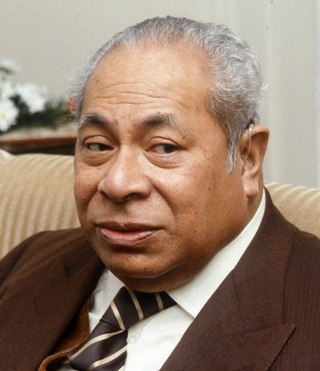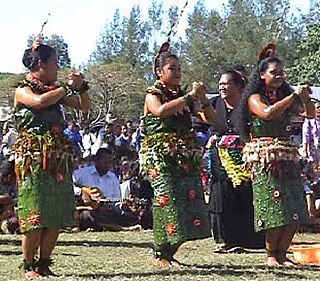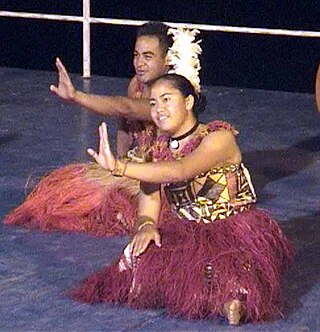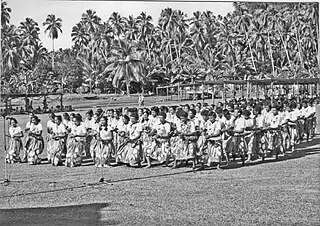
Tāufaʻāhau Tupou IV was the King of Tonga, from the death of his mother, Queen Sālote Tupou III, in 1965 until his own death in 2006.

Tupou VI is King of Tonga. He is the younger brother and successor of the late King George Tupou V. He was officially confirmed by his brother on 27 September 2006 as the heir presumptive to the Throne of Tonga, as his brother had no legitimate children. He served as Prime Minister of Tonga from 2000 to 2006 and as Tonga's High Commissioner to Australia, and resided in Canberra from 2008, until the death of King George Tupou V on 18 March 2012, when he became King of Tonga, with the regnal name Tupou VI.

Sālote Tupou III was Queen of Tonga from 1918 to her death in 1965. She reigned for nearly 48 years, longer than any other Tongan monarch. She was well known for her height, standing 6 ft 3 in tall in her prime.

George Tupou II was the King of Tonga from 18 February 1893 until his death. He was officially crowned at Nukuʻalofa, on 17 March 1893. He was also the 20th Tuʻi Kanokupolu.
Tuʻi Kanokupolu (chiefs) are a junior rank of the Haʻa Tuʻi in Tonga.

Tupou College is a Methodist boys' secondary boarding school in Toloa on the island of Tongatapu, Tonga. It is located on the Eastern District of Tongatapu near the village of Malapo. The school is owned by the Free Wesleyan Church of Tonga. Established in 1866 by James Egan Moulton, it claims to be the oldest secondary school in the Pacific Islands. Enrolment is some 1,000 pupils. Tupou College was first established at Nuku'alofa at the location on which Queen Salote College stands today. From there it moved to Nafualu, Sia'atoutai on the site where Sia’atoutai Theological College now stands. In 1948, the school last moved to Toloa in the Eastern District of Tongatapu where it still stands today.

The tauʻolunga is a traditional Tongan dance. It is a combination of the Samoan Taualuga and the Tongan ula. The type of dance is comparable with (some) Hawaiʻian hula or the Tahitian ʻaparima.
The ula (dance) is an ancient Tongan group dance, already reported by early European navigators like captain Cook. It is also known as fahaʻi-ula, which may be degenerated to fahaʻiula. Traditionally it is performed after an ʻotuhaka. It is still danced nowadays, although less popular than its descendant the tauʻolunga.

The ʻotuhaka is a traditional Tongan group dance with prominent Samoan influence wherein the performers are seated and make gestures with their arms only, with some accentuation from head and body.
The māʻuluʻulu is a traditional Tongan dance, performed by a group of seated men and women; stylistically, the dance form is a direct successor of the ancient Tongan ʻotuhaka having been synthesized with the Samoan Māuluulu which was imported during the 19th century.
Fīnau ʻUlukālala was a dynasty of six important hereditary chiefs from Vavaʻu, currently in the kingdom of Tonga. The dynasty began sometime in the 18th century and died out in 1960. The chief's original estate was Tuʻanuku, and his nickname and that of the village is Tavakefaiʻana.

Viliami Tungī Mailefihi CBE was a Tongan high chieftain and Prince Consort of Queen Sālote Tupou III. He served as Prime Minister of Tonga from 1923 until his death in 1941.

Siaosi ʻAlipate Halakilangi Tau’alupeoko Vaea Tupou, more commonly known as Baron Vaea, was a Tongan politician who served as Prime Minister of Tonga. Vaea was a nephew of Queen Sālote, who ruled Tonga from 1918 until 1965, and a member of the Tongan nobility. His career in the Tongan government spanned 54 years.

The tautoga is considered the most formal and restrained style of Rotuman dance, usually seen performed in large festivities or ceremonies, or in public opportunities to showcase Rotuman culture. The tautoga style can be seen as comparable to the Tuvaluan fatele or Tongan lakalaka, and the "toga" sound to the word alludes to such an origin.

Princess Royal Salote Mafile'o Pilolevu, The Honourable Lady Tuita is a Tongan princess and member of the Tongan royal family.

The Royal Order of the Crown of Tonga is an Order of Merit awarded for exceptional services to Tonga and the Crown of Tonga. Currently, it is the highest honor conferred by the Kingdom of Tonga.

Siaosi (George) Manumataongo ʻAlaivahamamaʻo ʻAhoʻeitu Konstantin Tukuʻaho is the crown prince of Tonga. Tupoutoʻa ʻUlukalala became heir apparent to the throne in March 2012 upon the accession of his father, Tupou VI, as King of Tonga.

Sitiveni Polu Le'uligana Tuku'aho is a Tongan Prince and member of the Tongan Royal Family.

Salote Maumautaimi Tuku'aho is a member of the Tongan Royal Family.
















